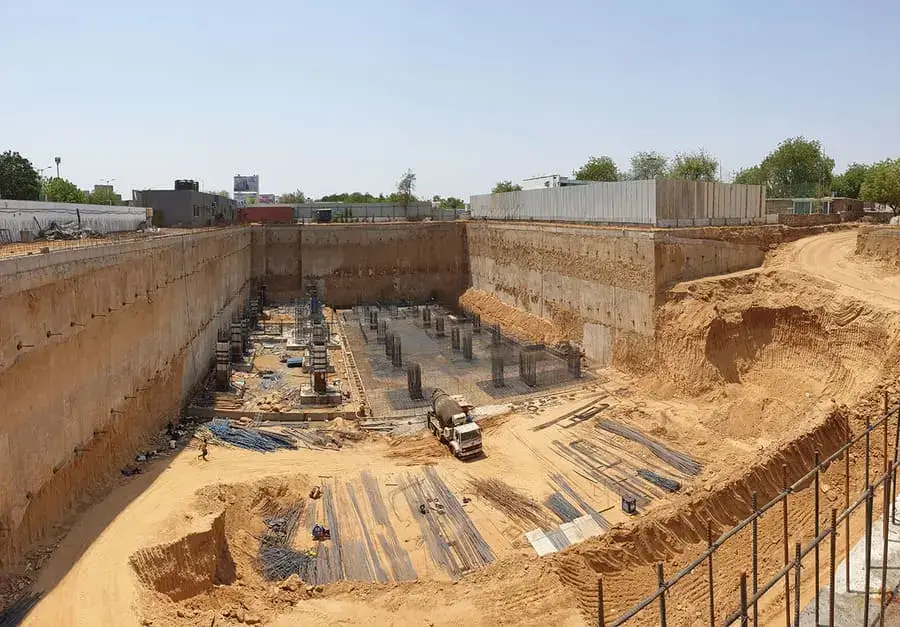Diaphragm walls can be made use of as structures, units, and cut-off walls for dams and excavation pits. These underground fortifications are constructed of concrete or steel-reinforced concrete. They stand up to water and contortion.
Overview wall surfaces are dug deep into by duty-cycle cranes utilizing Diaphragm Wall surface Maker or cutters to guide the excavator, permit variations in the stabilizing fluid degree, and temporarily shift weights from reinforcement or quit end elements.
When the trench reaches the called for deepness, the maintaining liquid is desanded and strengthening cages are placed. The concrete treatment adheres to. Momentary stop ends are reused throughout panel excavation.
# Technique 1: Diaphragm Walls Are Needed for Deep Excavation
There is a certain series that has to be adhered to when building a diaphragm wall. There is a demand for specialized Rental Building Tools in order to excavate this location. Contrasted to various other construction techniques, even more area is needed for this device.
# Technique 2: Including Diaphragm Wall Surfaces with the Help of Supporting Wall Surfaces
Lightly strengthened concrete preserving walls built on-site are the norm for this function. Guide walls keep a diaphragm wall’s plumb and stability while sustaining the upper soil depth throughout panel excavation.
Because the first foot or meter of a wall is particularly prone to instability because of changing slurry levels throughout construction, this interim assistance is necessary. Just as essential overview walls, which guide the diaphragm’s grips up and aid put the structure in position.
# Method 3: Excavation Is Needed Prior to the Installation of a Diaphragm Wall surface
Submerging the slurry pump completely in the bentonite slurry is a requirement before digging deep into with the diaphragm wall grabs. To accomplish this objective, the slurry is poured into a small opening excavated by the grab. It is not uncommon for pre excavation to be necessary before overview wall surfaces can be set up. You can take the assistance of GKV Facilities for their heavy devices rental in India to accomplish the pre excavation job.
# Method 4: The Major Panel Has To Be Excavated
Begin by focusing on the essential panels. The fastest panel length is three meters, but this can differ depending on the grab equipment (15ft). Here, the demand for Heavy Devices Rental may be essential. On the occasion that the ground is stable, the panels might be established in phases.
The panels left wing and right are excavated first, complied with by the panel in the centre. This procedure creates diaphragm wall panels that are in between 6.5 and 8 meters in size. Edge or T panels require lots of bites.
# Technique 5: Desanding And Cleansing the Diaphragm Wall Surface Using Slurries
Supporting slurry liquid have to be cleaned up to ensure that its criteria are within permitted worths while the concrete panel is being dug deep into. This must be done simultaneously with the excavation of the concrete panel (density, sand content, thickness, PH).
Throughout construction, the regeneration plant will from time to time perform periodic recirculations of the slurry. Making use of brand-new slurry fluid is one more option, although that doing so can lead to boosted expenses.
Diaphragm Wall Surface Joint Building And Construction Techniques
A diaphragm’s splices in its wall surfaces need to be analyzed completely. There are a variety of techniques to attach the diaphragm’s wall surfaces. Joint choice is influenced by both the digging devices and the specialist’s preferences.
Steel light beams, grooves, or even water quits are just a few of the many choices for signing up with surfaces together. Grooved joints that stop water from entering are the remarkable choice in almost all circumstances.
Setup of the reinforcement cage can begin when access to the panel base has actually been gotten and it has been cleansed. In most cases, the guide wall surface panels serve the purpose of safeguarding the support cage.
Due to this, it is essential to have adequate transverse and diagonal support in order to bring it right into placement. In order to tremie, there must go to the very least two and no more than 3 tremie pipelines present.
The supporting slurry can be transformed out for long-term concrete by installing upright pipelines called tremies. Concreting a diaphragm wall surface starts near the bottom with tremies, which are then elevated as the concrete degree increases. The tremies are then left in the newly poured concrete for a minimum of 2 feet to treat (0.6 m).
Over-pouring may be necessary to ensure that all slurry is driven away from the panel by the concrete. Slurry pockets might become entraped in the concrete of the diaphragm wall surface if the tremie job is poor. Costly groundwater leakages or blowouts might arise from such holes.
GKV Infrastructure, among the best Construction Equipment Rental Company, heavy equipment rental is a forerunner in geotechnical services and building, and this has actually been acknowledged by ISO 9001:2015 certification. By participating in every stage of Geotechnical Building Tasks, we’ve collected a phenomenal portfolio of cutting-edge design and building layout. Those working in the building profession have taken advantage of our strategies and techniques. Piling, Sheet Piling, HDD, Dirt Anchoring and construction equipment rental services in India are some of the solutions that our knowledgeable group has been providing for years. Present and previous consumers alike have expressed their appreciation for our innovative geotechnical services and our regular capacity to fulfill stringent due dates.
